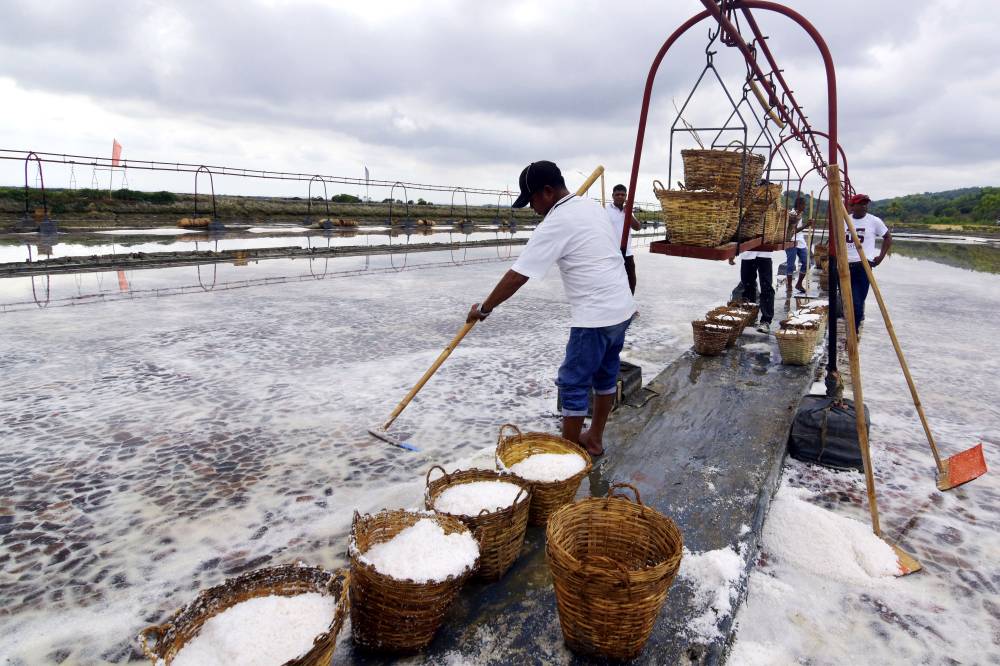Reviving our dying salt industry

It is almost criminal that the Philippines imports some 92 percent of its annual salt requirement despite having more than 36,000 kilometers of shoreline and access to abundant saltwater.
The drastic reduction in areas devoted to salt production, chronic lack of government and private sector support, and misguided policies have been blamed for this shameful situation, wherein the Philippines brings in from countries such as Australia and China about 628,500 metric tons of salt a year, 92 percent of the annual demand of 683,000 MT, from just 15 percent in 1990.
Hopes are high, however, that the “dying” salt industry will be revived with the recent passage of Republic Act No. 11985 or the Philippine Salt Industry Development Act which mandates the government “to map out, identify, and designate public lands, including portions of municipal waters, as salt production areas” in Pangasinan and Mindoro where the remaining salt farms are concentrated.
Salt road mapThe law signed by President Marcos last March 11 also calls for the formulation of a Philippine Salt Industry Development Roadmap that will spell out the programs for the development and management, research, processing, modernization, and commercialization of local salt.
A 16-member Philippine Salt Industry Development Council headed by the agriculture secretary will also be set up to ensure the “unified and integrated” implementation of the salt road map and speed up the modernization and industrialization of the long-neglected yet crucial industry.
Plus, tariffs to be collected from imported salt will be invested back into the local industry with the establishment of the Salt Industry Development and Competitiveness Enhancement Fund (Sidcef).Over the next 10 years, half of the Sidcef will be earmarked for projects such as machinery and equipment including seawater pumps, salt harvesters, bagging machines, and dump trucks, with 40 percent of the fund going to the establishment of salt farm warehouses and storage areas, and 5 percent each for the conduct of extension services and development of modern salt production and processing technologies.
Iodine deficiencyA crucial aspect of the law is the lifting of the requirement under RA 8172, or An Act for Salt Iodization Nationwide (Asin), for all locally produced salt to be iodized. Passed in 1995, the Asin law sought to address the rising incidence of iodine deficiency at that time. But it went overboard for even salt that is not used for food, such as for sanitation and water filtration, had to be iodized.
The requirement likewise did not apply to imported salt, thus it became more logical and viable to just import rather than spend on facilities to iodize salt.
Sen. Cynthia Villar, principal author of the Salt Industry Development Act, blamed this requirement under the Asin law for ultimately pushing the salt industry to the brink of death.
“The law, instead of promoting, became a deterrent in the development of the local salt industry. It has neglected to develop new areas and invite new investors; it made all salt food grade,” she said in 2023.
Artisanal saltThe freshly minted Philippine Salt Industry Development Act should be able to cure this infirmity with iodization now optional for artisanal salt and salt that will not be used in food production.The passage is timely as the Philippines is projected to need at least 300,000 more metric tons a year on top of the current demand of 683,000 because of the required use of salt to fertilize some 300 million coconut trees.Gerard Khonghun, president of the Philippine Association for Salt Industry Networks, could not emphasize enough the importance of rallying around a strategy to increase local salt production, likening salt to a national food security issue.
“Salt self-sufficiency will contribute to the agro-industrial development of the Philippines. Salt is, therefore, a national food security issue—and without salt, we believe that the Philippines is vulnerable to a food supply chain crisis,” said Khonghun.He had warned in 2022 that if no intervention would be made, the Philippines would likely import as much as 96 percent of its salt requirements by 2030.
Coastal communitiesThis projection should not come to pass now that the landmark law has been passed.
The challenge now is to transform the sound provisions of the law into concrete actions, from the collection of all duties to the spending on effective programs in accordance with the provisions set out in the law as well as the establishment of the council and the faithful execution of its mandate.
It is after all only in the proper implementation of the laudable law can it live up to its promise to drastically increase local production to make the Philippines not just self-sufficient and perhaps even become an exporter.
This will reduce imports that drain foreign exchange, improve the livelihood of the coastal communities at the same time, and secure the supply of a basic mineral of which Filipinos cannot do without.

















